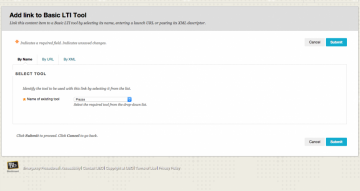A cross-disciplinary peer answer comparison tool
 Like many instructors in her department, English professor Tiffany Potter wanted to bring learning technology into her classroom but struggled with how to make technology serve her discipline, rather than the other way around. The available options did not easily support the type of nuanced, critical-thinking activities often done in literary analysis.
Like many instructors in her department, English professor Tiffany Potter wanted to bring learning technology into her classroom but struggled with how to make technology serve her discipline, rather than the other way around. The available options did not easily support the type of nuanced, critical-thinking activities often done in literary analysis.
“A lot of the technologies are not a great match for the kind of teaching that many of us are doing. So I was interested in a way to bring technology into the classroom without feeling like I was creating a multiple-choice environment.”
When CTLT reached out to Tiffany for guidance in developing a new and original learning technology, she jumped on board. The technology seemed like a good fit for her classroom: students answer a question, then compare, rank, and give feedback on increasingly similar pairs of peer answers.
“And what that’s trying to do is direct them to think about what makes a good answer, in hopes they can they translate that back to their own work.”
Through a series of meetings with CTLT and colleagues from math and physics, Tiffany helped shape the application. After eight months of collaborative work, she piloted the new tool (now called ComPAIR) in ENGL 110 with 120-plus students.
Tiffany and her teaching assistants oversaw two assignments in the application. For each, students submitted a critical premise on a given topic, evaluated three pairs of their peers’ premises, and completed follow-up exercises in tutorial groups.
“They were sent to do some advanced thinking outside of class. When they came in having done that thinking and assessment, the level of class discussion was really exciting.”
Students responded positively to the application, as evidenced by a high rate of participation and comments received through an official survey, focus groups, and the course evaluation.
“A lot of them reported that it was something that led them to think more about their writing and what a professor might be thinking as she assesses their work.”
Tiffany is enthusiastic about the application’s success so far and about the process that brought it together.
“What was great about it was: I am not a tech person, and CTLT invited me into a technological process and helped me to translate into a new medium what I wanted to have happen in terms of pedagogy and learning outcomes, and my students and their experience.”
Faculty and staff interested in piloting this tool or discussing other learning technology ideas can can call, email, or visit the Learning Technology Hub or suggest an idea to get a discussion going.


